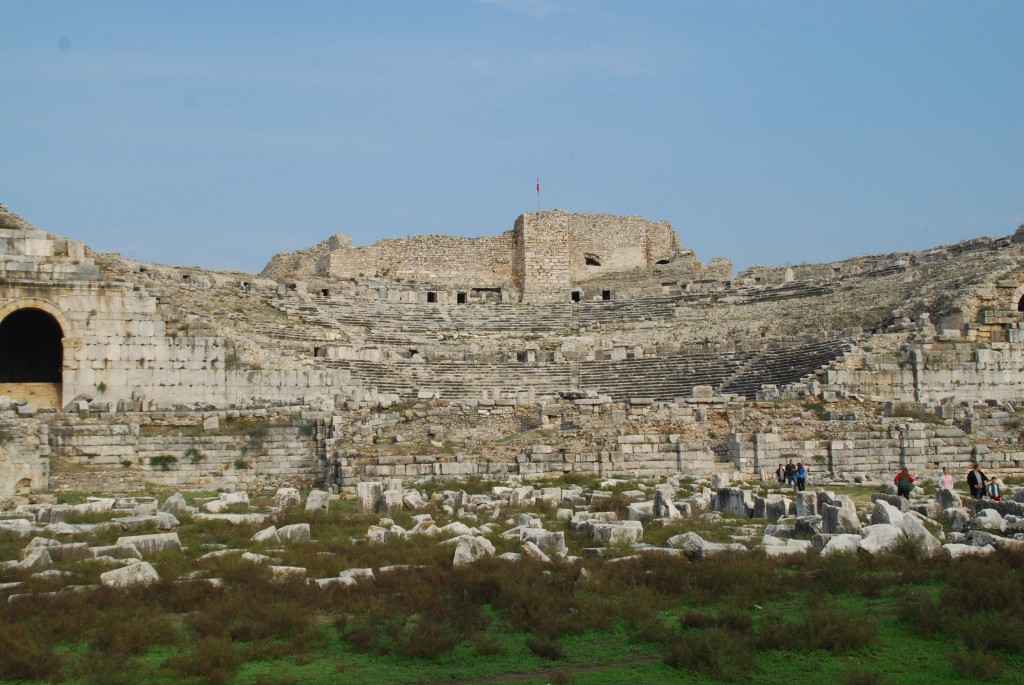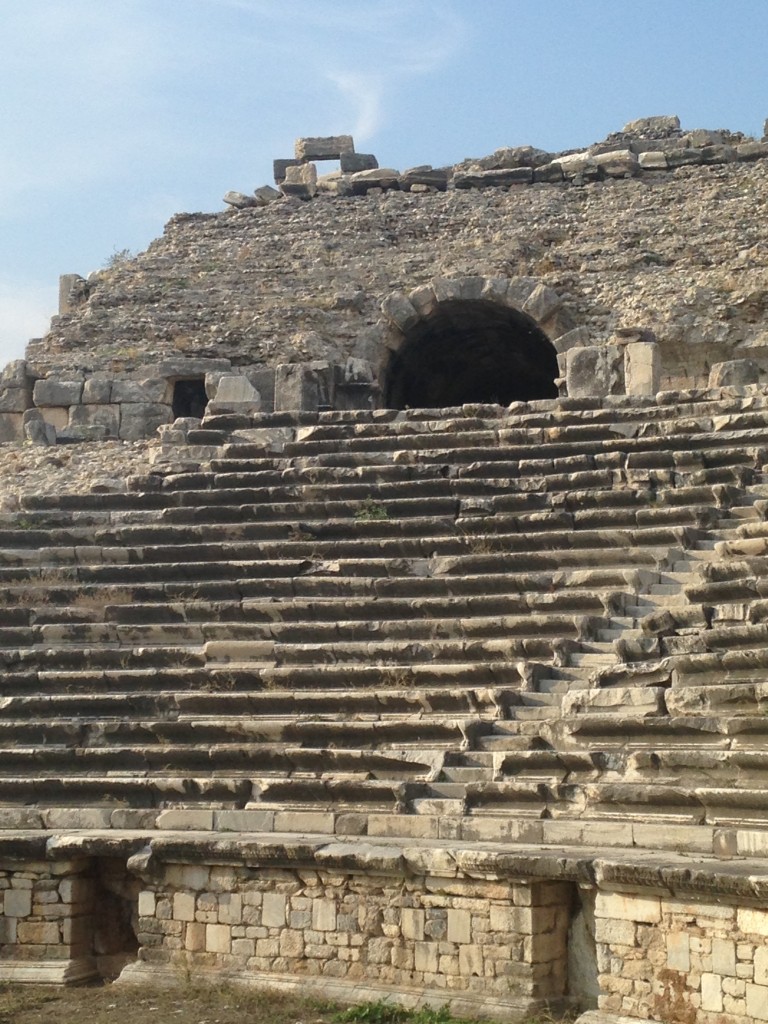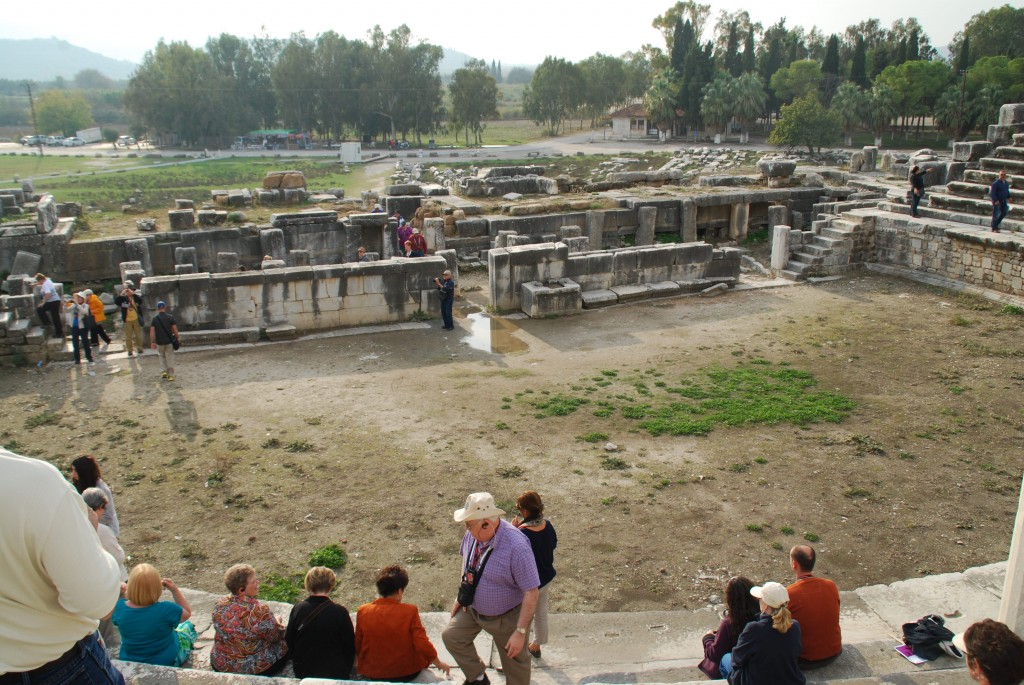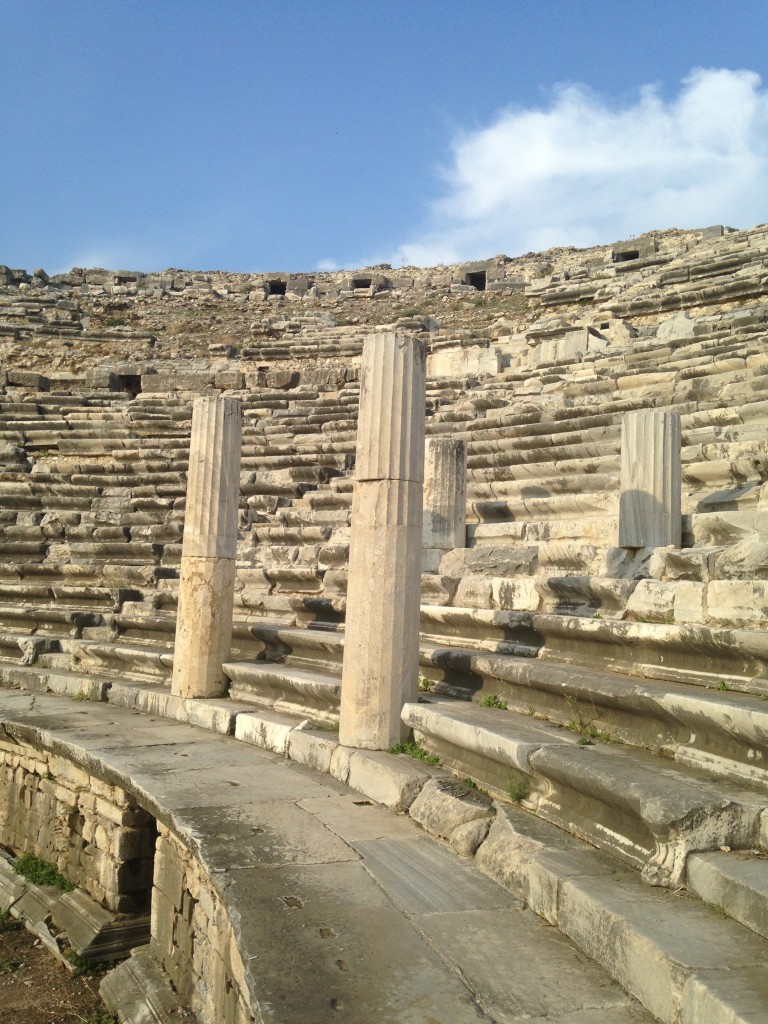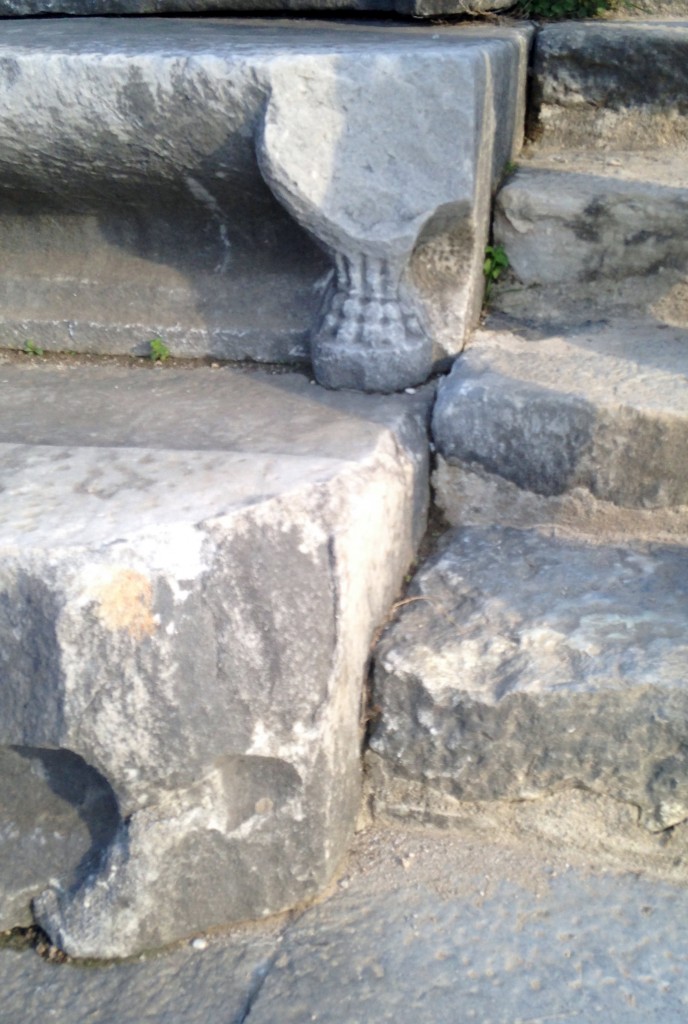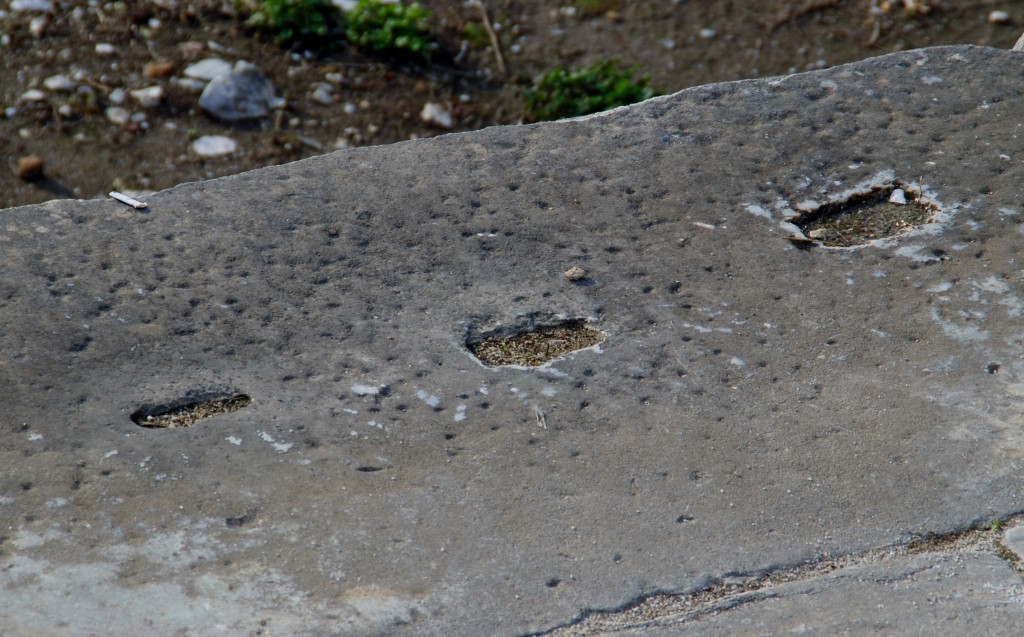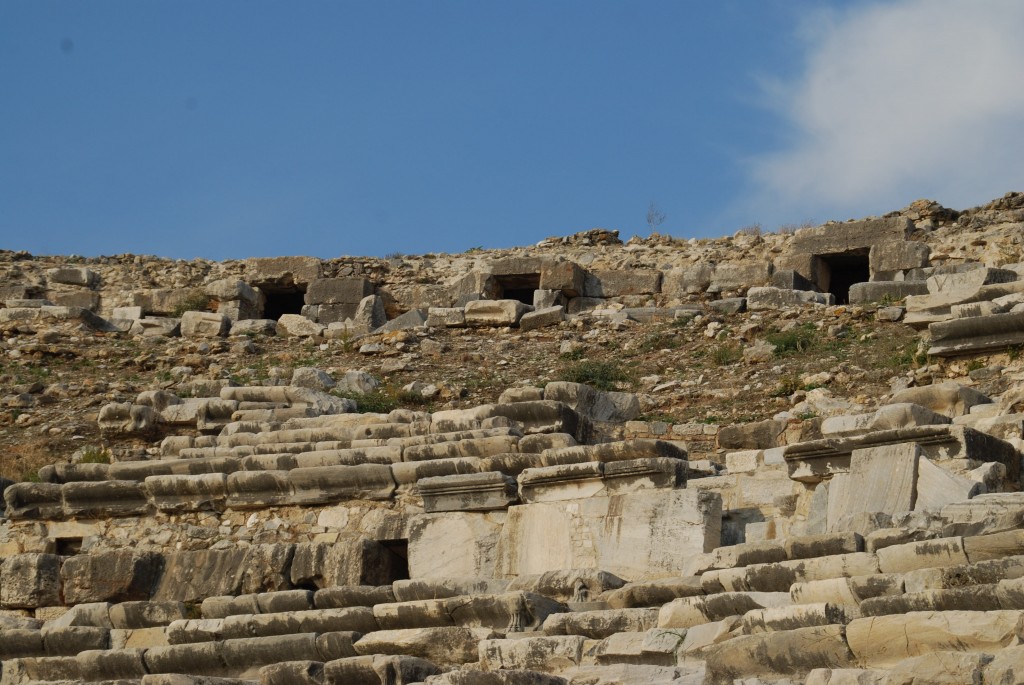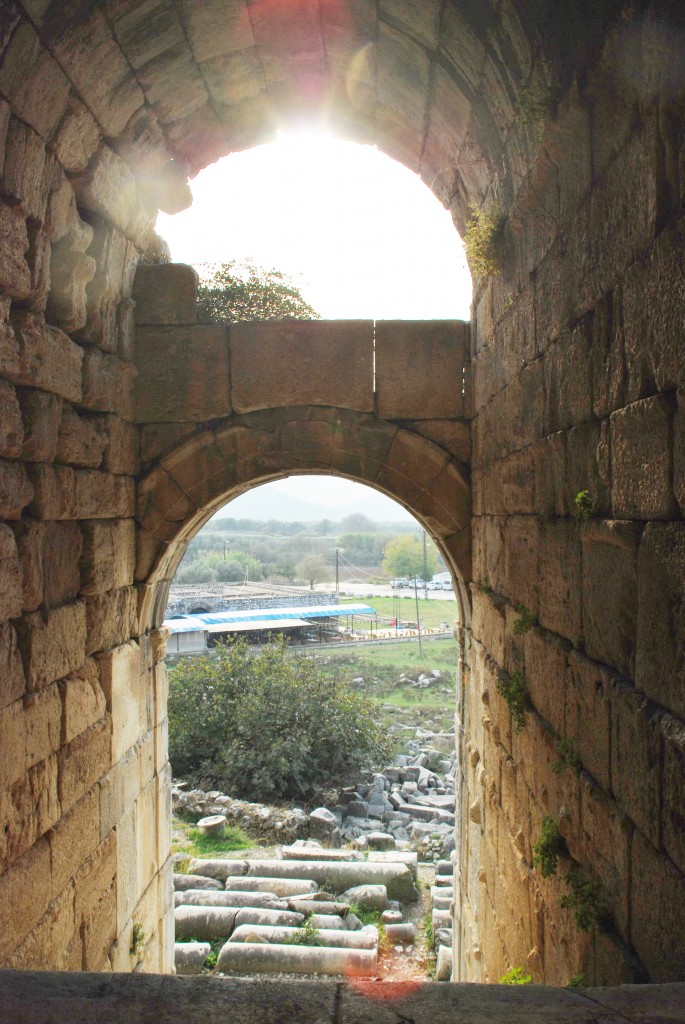On a tour of Turkey, our group made a quick stop at Turkmen Carpets where we learned how carpets were made. I saw, first-hand, the exquisite work that was put into themcreation of these carpets by some of the local weavers before we boarded the tour bus for our next location, Miletus.
The archaeological site of Miletus, a once prosperous Turkish city, was one of the principal Ionian cities of Asia Minor. It was also a stop on Apostle Paul’s third missionary journey. As our coach approached the site, we noticed the outer wall of the theater, visible from the tour bus and a large space of hewn stone. It was hard to believe that at one time, Miletus was the wealthiest of all Greek cities during the Hellenistic era.
The theater is only one stop on our trip to Miletus. This large structures is similar to our theatrical stages of today and was built into a hill between the Bay of Lions and the Theater Harbor. Sixty rows of seats climb to the top with a seating capacity of 15,000 spectators. Construction began in the 4th century BC but improvements were made under the direction of Emperor Trajan. The third level was later added with ornate decorations to the columns representing hunting scenes with the god Eros.
According to historian Josephus, there was a Greek inscription on the fifth row that read, “For the Jews and the God-fearers.” It was a reminder of Rome’s “tolerance of the Jews” that resided in Miletus and were permitted to attend the theater.
We climbed up to the seats which would have been reserved for the upper class in the first few rows. I could clearly see the three sections of the Roman theatre that included the backstage area, additional seating arrangements for the audience and the orchestra. The productions would have been nothing less than extravagant and the acoustics, spectacular.
Looking into the stadium, there were four columns that seemed set apart from the general population’s seating area. Known as the “Royal Box”, it was located in the center of the first few rows and was designated as an exclusive box for the emperors. The columns were used to drape a covering over the area to shade the royals from the inclement weather and heat of the sun.
An interesting feature of the Miletus theater were the lion paws on the outer edge of the benched seats. Lions were symbols of strength and royalty back in the ancient days and the ornate design seemed to suggest that this was once a flourishing city.
Even the small details that our tour guide pointed out were absolutely fascinating. For example, taking a closer look at the stone platform designated for the Emperor and his family, we could see the awning attachments.
Gazing up towards the high seats of the Miletus Theater, I could clearly see the third row addition. The cave-like entrances provided a way in and out of the theater. The added space would have also minimized the interaction between the upper and lower class.
Just as the spectators would have left the theater, we made our way out towards the public structures of this well-preserved archaeological site. Our guide pointed out some of the major points of interest, but with such little time, we could only see some of these ruins from afar. There was so much to explore in the town of Miletus.
Have you traveled to Miletus? What were some of the places that interested you? I would love to hear about your visit if you would kindly leave a message in the comments section below. Many thanks for reading about my excurstion to Miletus! Wishing you many Happy Travels!
To learn more about the archaeological site of Miletus, check out my recent blog post, The Baths of Miletus.
For more information about the beautiful, exotic country of Turkey, check out the following links!
Topkapki Palace
The Blue Mosque
Hagia Sophia
Spice Bazaar and Hippodrome
Ephesus, Turkey: A Journey Back in Time
A Turkish Carpet Demonstration
Kusadasi and its Symbol of Peace
The Baths of Miletus
